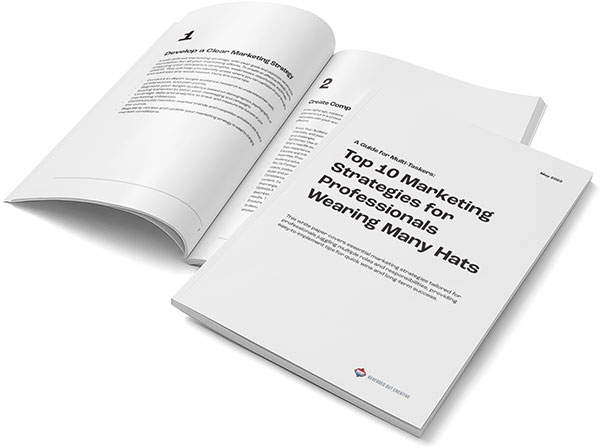
Introduction to Blogging and SEO
Blogging and SEO are two pieces of your marketing that are tied together. When used in harmony, they can be instrumental in attracting more people to your website—if you do it right. We’ve compiled the best of the top suggestions for structuring your writing, adding imagery, and promoting your content. Once you get into a workflow for writing and publishing, you’ll see an uptick in blog post shares and organic traffic.
Do Your Keyword Research
Keyword research is the process of finding out which keywords people search for on Google and other search engines, such as Bing and Yahoo. By analyzing these keywords, you can get an idea of what people are looking for in your content. Keywords are also used by search engines to determine where your page should rank in their results pages (SERPs).
When you do keyword research it’s important to keep in mind that not all words have equal value when it comes to SEO. Some keywords are more valuable than others because they have more traffic or less competition. To figure out which words are most valuable, you need to do your research! The goal here is to identify low-competition terms that bring traffic with high intent signals: specific questions users might ask related to the topic of your blog post topic before they visit your site (for example: “how do I buy my first house?”), or phrases they would use while searching online – like “home buying tips.”
Craft a Compelling Headline
- Use the inverted pyramid style.
Let’s start with the most important information. What is a headline? It’s one of the most important parts of your blog post. It should be written in such a way that it grabs your reader’s attention and piques their interest enough to click on your link and read more, but not so intriguingly that they’re left hanging wondering what happens next. This can be done by using a question or number at the beginning of your headline. For example: “How to fix this mistake?” or “10 ways to improve XYZ.”
You can also use numbers as part of longer titles if you want extra emphasis on certain points within the article—for example, “15 easy solutions for common problems” will help readers prioritize what they need most out of all possible solutions when browsing through search results from a search engine like Google (or Bing). Part of your blogging and SEO strategy could also be to simply craft your headline as a search string a customer would enter into Google.
- Inject personality into your writing style!
It’s easy for us as human beings to connect with another person who has similar interests or goals; this applies equally well when writing online content too! If you have something interesting going on in life right now, then don’t hesitate – share it! Maybe there are some exciting things happening at work; maybe there are new projects coming up soon… whatever it may be – just make sure not only do these details sound authentic but also relevant too (i.e., related specifically back towards whatever topic/topic area we happen to be currently discussing).
Create Your Blogging & SEO Editorial Calendar
- Create a blogging and SEO editorial calendar. It’s important to plan your content strategy in advance, including when you will publish it, what story ideas you have, and who will be involved. If you have social media accounts or email marketing campaigns that need to be planned out as well, include those in the calendar as well.
- Make sure all of your content is related to a single topic or theme rather than covering everything under the sun without any focus.
- Don’t wait until it’s too late before posting on social media—plan ahead so that you can schedule posts and tweets at optimal times for better engagement with followers (e.g., early mornings) or avoid bad times altogether (e.g., late evenings).
Focus on High-Level Ideas
- You should be writing for a general audience. You may have the best idea in the world, but if you can’t explain it to a layperson, it’s not worth writing about.
- If you find yourself beginning to write about a specific topic—a product or service that your business offers, for example—stop yourself and ask: “Who will benefit from this information?” If the answer is something like “Well, everyone who uses this thing,” then go ahead and write about it. If not, try again (this time with less generality).
Don’t Forget Long-Tail Keywords
Long-tail keywords are more specific, and that’s why they’re easier to rank for in both the short and long term. In other words, you’re targeting a smaller group of people who are more likely to convert into leads or customers.
Long-tail keywords also make it easier for Google to understand what your content is about (and therefore more likely to show your site in search results), which means that even if someone searches for a long-tail keyword today, it’ll still be relevant next month when they’ve forgotten exactly what they wanted and need a refresher on the topic.
Create a Posting Schedule and Stick to It
When it comes to posting schedules, there are many options. If you want to post once a week, stick to that schedule and keep your readers coming back for more. If you have a lot of great content or want to keep your audience engaged with new content regularly, try publishing multiple times per week (or even daily).
You can also think about how often people read blogs in general and what times work best for them. Generally speaking, most people browse their favorite sites from 9 am to 5 pm on weekdays and weekends—if yours is similar, then consider posting at these times. For example: “I publish my blog posts every Monday morning between 10am – 11am EST.”
Your readers will appreciate knowing when they can expect new posts from you so that they can plan accordingly!
Create Content With People in Mind
One of the best ways to create content that people want to read is by using a persona. A persona is a fictional character that represents your ideal customer. It helps you understand who your audience is and what they want from you and your blog. Bring this character to life, give them a name, job, etc. and make them seem real.
Don’t Forget to Promote Your Content
Once you have the content, it’s time to promote it. Although social media is the most important channel for your blog, don’t forget about other platforms like email marketing, paid ads (Facebook and Google), and affiliates.
Use a tool like Buffer or Hootsuite to schedule all of your posts in one place so they go out at the best times throughout the day — this will help with visibility and engagement as well as SEO rankings. You can also use these tools to manage multiple social media accounts from one place, saving you time and effort.
BuzzSumo allows users to search for influencers based on certain metrics such as follower count or domain authority (DA). Use Ahrefs’ Content Explorer tool specifically if you need more ideas for new content topics — just enter terms related to yours into its keyword research tab then click “Show All” next to “Related Keywords.” This will give you several suggestions based on those keywords’ popularity across different websites over time — including some that may be relevant that haven’t been posted about yet!
Create Featured Images for Each Blog Post
Featured images are essential to the user experience and may result in more time spent on your blog. This is because search engines will use this image as part of their results listings, which means that if you have a compelling image, it could help drive traffic back to your site. If you don’t have an image embedded within your post, then it may not show up at all in Google’s search results.
Write in Second Person, But…
When writing in second person, it’s important to keep in mind who your intended audience is. If you’re talking about yourself, use first person (I or We) instead of second person (you). If you’re writing about your readers, use second person (you) instead of third (they). And if you’re writing about companies or products, use third-person pronouns such as they and their.
In addition to these general guidelines for using different grammatical forms appropriately when speaking directly to an audience, there are also some common words and phrases that are more commonly used when speaking directly with a reader rather than referring more generally to them:
- Make sure it’s clear what kind of relationship exists between writer and reader: “You” can mean either “the reader” or “a single member of the group.”
- Use inclusive language: Instead of saying things like “all men” or “most people” try using words like “many,” “most,” or even just saying how many people got something right/wrong; this makes it clearer that everyone isn’t automatically included in those statements.
Regularly Update and Improve Older Blog Posts
Regularly updating your older blog posts can help keep them relevant and make sure your readers see the most up-to-date information. Blogging and SEO require consistency because search engines are looking for timely and relevant content for their users. If you’re not sure how long it’s been since you last updated a post, look at when it was published on the calendar view of your WordPress dashboard (or similar blogging software). If it’s been more than 3 or so months since you last touched a post, then consider updating it to ensure that the content is still fresh in your reader’s minds.
Another reason to update older posts is that Google tends to rank newer content higher than older content in search engine results pages (SERPs). So by constantly updating older posts, you’ll give yourself an edge over other sites that haven’t done so and are stuck with outdated content on their blog pages. This is a smart little blogging and SEO trick experts use to stay on top and not have to write completely new content.
You’ll attract more readers with these blogging and SEO best practices
If you want to attract more search engine traffic, social media shares, links, and comments, or conversions for your blog posts, then try using the following best practices. Blogging and SEO together can be a smart and powerful way to generate more site traffic and educate your customers.
Conclusion
As you can see, there are some simple blogging and SEO best practices you can implement to attract more readers. If you’re ready to get started, feel free to contact us at Reversed Out Creative.
Contact Us
At Reversed Out Creative, we understand the challenges and opportunities presented by AI disruption. Our team of experts specializes in web design, SEO, graphic design, and digital marketing services. Reach out to us through our contact form to learn more about navigating the evolving job market and embracing the potential of AI. Together, let’s shape a future that combines human ingenuity with the power of AI.
Next Article: SEO Strategies For Manufacturing Companies
©2025 Reversed Out LLC. All rights reserved. Privacy Policy.


